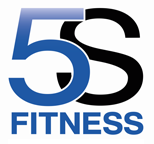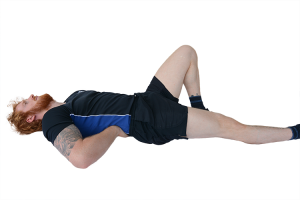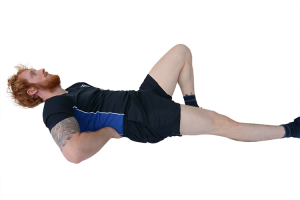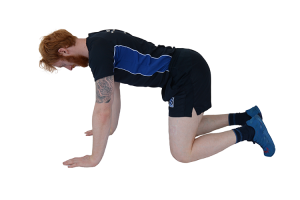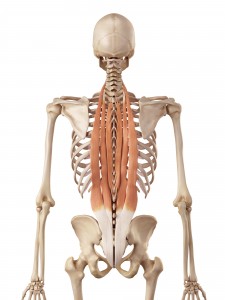 “Low back pain” is pain, muscle tension, or stiffness localized below the costal margin (bottom edge of the ribcage) and above the inferior gluteal folds (bottom of your buttocks), with or without sciatica, and is defined as chronic when it persists for 12 weeks or more.
“Low back pain” is pain, muscle tension, or stiffness localized below the costal margin (bottom edge of the ribcage) and above the inferior gluteal folds (bottom of your buttocks), with or without sciatica, and is defined as chronic when it persists for 12 weeks or more.
If you are suffering with back pain, go and see a specialist. It is always worth getting an expert opinion.
However, there is a term that gets thrown around a lot – “Non-specific low back pain”. This is a general term that refers to any type of back pain in the low back that is not related to serious pathology and/or does not have a specific cause. Some (Dr Stuart McGill) disagree with the term, and I can understand why, as the diagnosis can often leave the sufferer with the feeling that there is no cause and therefore no remedy – it’s definitely a response I have seen from clients I work with.
(The concept that is non-specific low back pain, is what this article is looking at).
Dr Stuart McGill is a leading spinal researcher who believes all back pain has a root cause and can be helped (not necessarily cures, but definitely improved). He promotes “The Big Three” as his non-negotiable core exercises for a healthy lower spine.
- McGill Curl Ups (Modified Curl Ups)
- Birddogs
- Side Planks
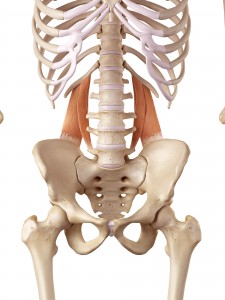 What has been proven time and time again to have the most benefits to this condition is strengthening and mobilising various muscles which surround and support the lumbar spine and pelvis. This, in turn, reinforces good posture, which should be consciously maintained as best possible throughout the day.
What has been proven time and time again to have the most benefits to this condition is strengthening and mobilising various muscles which surround and support the lumbar spine and pelvis. This, in turn, reinforces good posture, which should be consciously maintained as best possible throughout the day.
McGill’s Big Three are a great place to start when it comes to strengthening the muscles which help to support your spine.
McGill Curl Ups
McGill curl ups are essentially a sit up variation, which have the benefit of working your abs without excessively flexing your lumbar vertebra.
The exercise can look easy, but as with all core work, when it is performed correctly and you consciously engage the muscles you are trying to work, they are one of the hardest ab exercises out there.
1. Lie down with your head flat on the floor.
2. Bend your right leg, bringing your heel up towards your glutes while keeping your left leg extended.
3. Bend your elbows and place your hands under your lower back. This ensures you maintain a neutral spine throughout the movement. Keeping your elbows raised off the floor throughout the movement makes it harder.
4. Slowly raise your head and shoulders up a few inches and maximally contract your abs for 10 seconds before slowly returning to the starting position.
5. Try not to roll your chin towards your chest. Keep your chin retracted as you raise your shoulders and head up.
6. Complete 3-5 sets of 5 reps with 10 second pauses at the top.
Side Planks
Side planks are a greatly underused exercise which are ideal for the development and maintenance of the deep core musculature that supports your spine and resists lateral flexion (side bending of the spine).
1. Sit on the floor.
2. Lie to the side and place your right forearm onto the floor, perpendicular to your body.
3. Placing your left foot to the front of your right foot, helps to keep your hips in a balanced position and also allows you to easily transition from front and side plank variations.
4. Raise your hips up so there is no side bending of your spine and your lower legs are raised off the floor.
5. Engage your glutes so your hips are extended. Having slightly bent hips is a common fault.
6. Maximally brace your core musculature as you would during a RKC plank.
7. Either keep your left arm flat to your body or raise it to the sky.
8. Complete 2-3 sets of 30-40 seconds on each side.
Birddog
The birddog exercise has a similar concept to the dead bug. However, you are working from all fours.
It’s a great exercise for working your abs and back, again working both hip and shoulder function.
1. Start on all fours, with your elbows and shoulders over your hands and your hips over your knees.
2. Ensure your spine and pelvis stay neutral. Avoid tipping to one side to compensate.
3. Keep your core tight and slowly extend your right leg behind you while reaching forward with your left arm to the front (flexing your shoulder). This position can be held like a plank.
4. Return your arm and leg back to the starting position and proceed with the opposite side, or you can bring your left elbow (or palm) to your right knee before extending them out again without placing them down.
5. Complete 3-5 sets of 10-20 reps (counting each leg extension as a rep).
Now that I’ve explained the exercises (appropriate sets & reps etc), it comes to how often you should be doing them.
The general concept on how often you should train, usually stems from a bodybuilding stand point (hypertrophy – muscle building), and therefore the consensus is that you should train three times a week for example.
However, the human body requires physical activity everyday, and if you tend to sit for long periods (something that can be detrimental to structural health), it’s in your best interest to counter this with plenty of maintenance work (The Big Three).
Therefore, try to incorporate these exercises as often as you can, everyday if possible.
A lot of individuals come across almost offended if you suggest they should perform some physical activity each day (“Do you know how busy my life is!”). However, you have to eat and drink everyday, why can’t you throw in a few side planks and curl ups to keep your structure in good health.
Thanks for Reading
Jay
Follow us on:
Facebook: www.facebook.com/5sfitnessuk
Twitter: www.twitter.com/5sfitness
Instagram: www.instagram.com/5s_fitness
YouTube: www.youtube.com/channel/UC66XVf9NZBO8j-V4or5d2Tg
